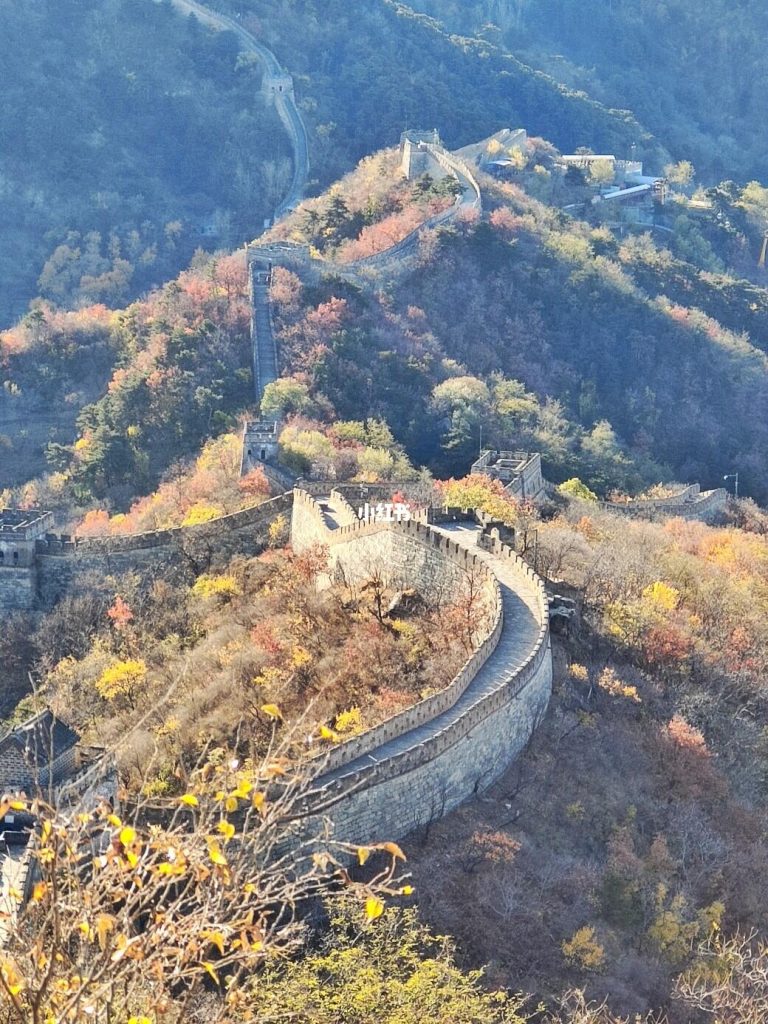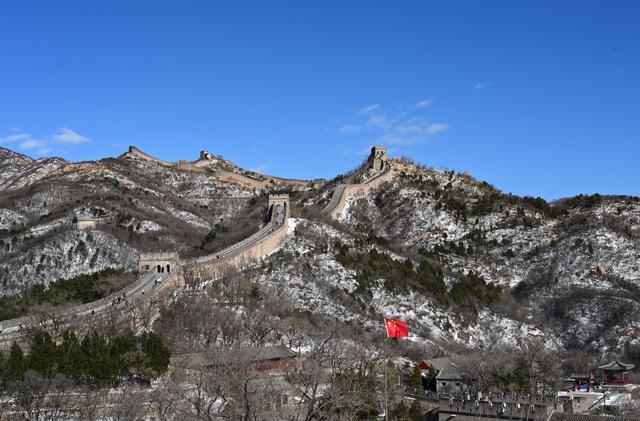November is a underrated gem for visiting the Great Wall of China. It falls between the bustling National Day holiday (October) and the cold winter months (December–February), offering a unique blend of lingering autumn beauty, fewer crowds, and crisp, clear days. While the air turns cooler, the quiet serenity and dramatic landscapes make this month ideal for travelers seeking a more intimate, immersive experience of the world’s greatest defensive structure. Whether you’re hiking a well-known section like Badaling or a wilder one like Simatai, November reveals a side of the Great Wall that’s both peaceful and awe-inspiring.

Weather in November: Cool, Dry, and Clear
November’s weather along the Great Wall is defined by cool temperatures and low rainfall—perfect for outdoor exploration without the summer heat or summer humidity. Average temperatures range from 2°C to 12°C (36°F to 54°F) during the day, with nights dropping to near or below freezing (0°C/32°F), especially in mountainous sections like Jinshanling or 司马台 (Simatai).
Rainfall is rare this month—most regions around the Great Wall see only 1–2 rainy days in November, and snow is unusual (though a light dusting might occur in late November at higher altitudes, adding a magical touch without disrupting travel). The air is dry and crisp, which means excellent visibility—you’ll be able to see the Great Wall winding through the mountains for miles, with no haze obscuring the views. One thing to note: November winds can be strong, especially on exposed sections like the top of Badaling or Mutianyu’s western watchtowers. A light windbreaker or scarf will keep you comfortable while walking.

Scenery: Autumn’s Last Hurrah Before Winter
November’s landscapes along the Great Wall are a beautiful transition from autumn to winter. While October boasts fiery red and gold foliage, November offers a more muted, earthy palette—still stunning, but with a quiet charm.
- Lingering Red Leaves: In lower-altitude sections like Mutianyu (near Beijing), the last traces of autumn leaves cling to the trees. Maple and oak leaves fade from bright red to deep burgundy, while ginkgo leaves turn golden yellow before falling. These scattered bursts of color stand out against the Great Wall’s gray bricks and the increasingly bare branches of other trees, creating a picturesque, almost painterly scene.
- Barren Mountain Beauty: As leaves fall, the mountains’ rocky contours become more visible. Sections like 司马台 (Simatai) and Gubeikou, with their wild, unrenovated walls, blend seamlessly with the rugged, brown hills—evoking the Great Wall’s original role as a defensive barrier against the vast northern plains. The contrast between the man-made stone walls and the natural mountain terrain is more striking in November, as there’s less foliage to “soften” the landscape.
- Clear Skies and Sunlight: November’s bright, low-angle sunlight adds warmth to the cool days. In the morning, the sun paints the Great Wall’s bricks in a golden hue; in the afternoon, long shadows stretch across the wall, highlighting its texture and ancient cracks. Sunset is particularly beautiful—skies turn pink and orange, casting a glow over the mountains and making every photo look like a postcard.
When Is the Best Time to Visit the Great Wall of China?
Visitor Experience: Fewer Crowds, More Peace
One of the biggest advantages of visiting the Great Wall in November is the lack of crowds. October’s holiday rush has long passed, and winter tourists haven’t arrived yet—meaning you’ll have more space to walk, fewer lines at ticket offices and cable cars, and quiet moments to stand on a watchtower and soak in the history without the buzz of large groups.
At popular sections like Badaling, you might even find stretches of the wall where you’re the only visitor—a rare luxury in busier months. This makes November perfect for photography: you won’t have to wait for strangers to move out of your shot, and you can capture the Great Wall’s grandeur in its natural, undisturbed state. For hikers, fewer crowds also mean a safer, more relaxed experience—you won’t have to navigate around other people on narrow or steep sections.
What to Wear and Practical Tips
Dressing in layers is key for November’s cool, variable weather. Here’s what to pack:
- Base Layer: A thin thermal shirt (preferably moisture-wicking) to keep you warm without bulk.
- Mid Layer: A fleece jacket or thick sweater—ideal for trapping heat during walks.
- Outer Layer: A windproof, water-resistant jacket (lightweight is fine, as heavy rain is unlikely). A scarf, gloves, and a beanie are essential too—your ears, hands, and neck will feel the cold, especially in the morning or on windy sections.
- Shoes: Sturdy hiking boots with good grip. November’s dry weather means the wall’s steps are less slippery than in summer, but some sections (like Simatai’s wild bricks) can still be uneven—proper boots will protect your feet.
Other practical tips:
- Bring Snacks and Hot Drinks: Most Great Wall sections have fewer food stalls open in November, so pack energy bars, nuts, or dried fruit. A thermos of hot tea or coffee will keep you warm and cozy during breaks.
- Check Cable Car Schedules: Some cable cars (like those at Mutianyu) reduce operating hours in November (closing at 4:30 PM instead of 5:30 PM). Plan your hike early to avoid missing the last ride down.
- Choose the Right Section:
- Mutianyu: Great for families or casual hikers—its well-maintained paths and cable car make it easy to explore, and the lingering autumn leaves are beautiful.
- 司马台 (Simatai): Perfect for adventure seekers—its wild, unrenovated walls offer a raw experience, and the views of the Gubei Water Town (which lights up in the evening) are magical in November.
- Jinshanling: Ideal for photographers—its 67 watchtowers and rolling mountain backdrops look stunning in November’s clear light.
Why November Is Worth the Trip
November may not be the most popular month to visit the Great Wall, but it’s one of the most rewarding. It’s a time when you can connect with the wall’s history without distractions—when the only sounds are the wind, your footsteps, and the distant call of a bird. Whether you’re hiking alone, with friends, or with family, the quiet beauty of the Great Wall in November will stay with you long after your trip ends. It’s a chance to see this ancient wonder not as a crowded tourist attraction, but as it once was: a silent guardian of the mountains, standing tall against the changing seasons.
So, if you’re looking for a peaceful, scenic Great Wall experience, pack your warm clothes and head out in November—you won’t be disappointed.